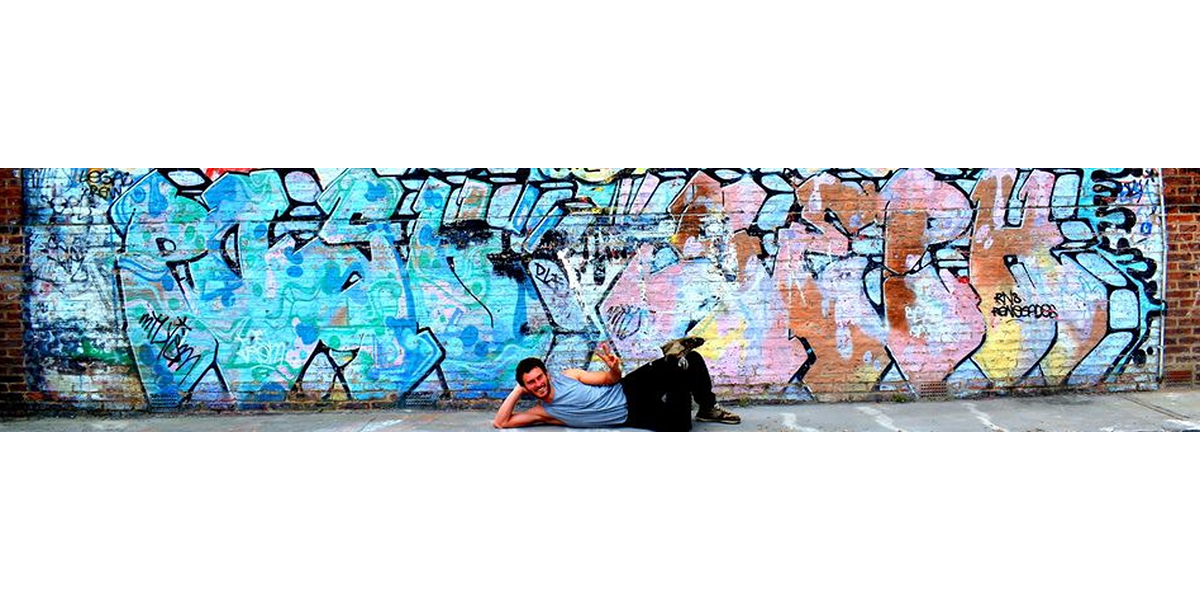Growing up as a teenager hanging about in NY (North Yorkshire) the cobbled cityscape was completely transformed in our perceptions after discovering a creative voice – some wrote graffiti, made beats or rapped. Cultural significance was given to ever-changing underpasses and alleyways. Junk shops that had cheap vinyl for grabbing samples took on new identities with exciting opportunities to find drum breaks and samples to chop up and loop; reaching a high level of craft overtook everything else with a constant obsession.
The people in the group came from different social backgrounds, different schools and most of us didn’t really know Hip Hop cultures origins when we started. Something specific had sparked each person’s obsession, leading to us finding each other at music events or painting at local spots. Meeting people from around the world at jams and music events – our story is nothing out of the ordinary. No other art form has spread with such unavoidable recognition. You’d be stretched to find a country with no hip hop influenced graffiti, a type of music that’s not been sampled and looped into a beat, a language that people haven’t rapped in.
What makes the culture so universally appealing for young people to get together and find their own creative voices?
Heritage and a deeper connection to your surroundings
There were gems still hidden around the city. Paintings left over from the late 80s by revered names. A garage near ‘The Big Sainos’ was occasionally left open and inside it was a piece by Part 2, the first person in the world to do huge photorealistic paintings in spray paint, whose music production also inspired the iconic bassline of the track Witness The Fitness by Roots Manuva. The 2 storey car park of the same Big Sainos my mum would park the car in when we went shopping turned out to have housed a massive graffiti jam in 1988 where the legend Goldie, among many others, painted. The world’s first graffiti jam, where originators of the movement from New York came to the U.K to paint was, for some mad reason, in Bridlington – a small coastal town in East Yorkshire where my nan lived. The unlikelihood of the locations as cultural landmarks added to the excitement.
The folklore aspect of the culture is incredibly powerful. It brings a deeper connection to spaces previously mundane and almost invisible. All of a sudden, histories are laid out by accomplished creative people, who made this initial legacy by perfecting painting or making music actively in a local scene, rather than being in art galleries or on big record labels. The inspiration that comes with knowing regular people made these cultural shifts in the seemingly most boring areas of the city by just getting out there and doing it is amazing. The coolest part is this is not exclusive to York. Dig into the history of most cities in the U.K and there will be big names that came out of Hip Hop culture and became legendary in their own right.
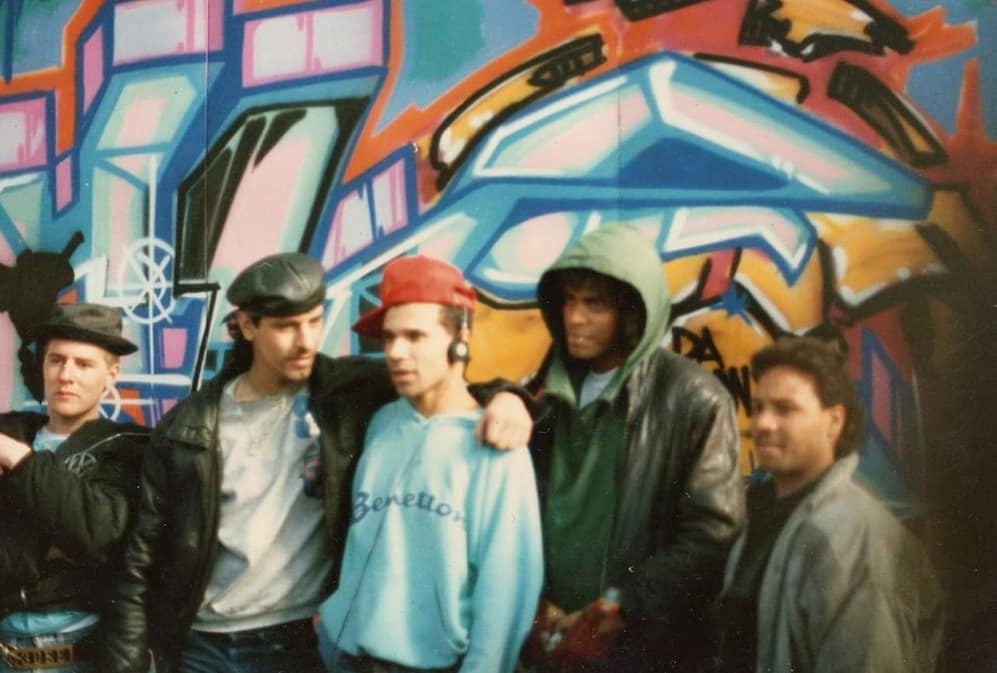
3D (Robert Del Naja from Massive Attack)
T KID GOLDIE VULCAN 2 DRAW
‘I am a walking affirmation, that imagination
And focus and patience gets you closer to your aspiration
And just ’cause they give you shit don’t mean you have to take it’
Freedom of Anonymity, Independence, and Authenticity
MCs, Beat Makers, Breakers, Writers. No matter which craft in Hip Hop people lean towards, everyone has their own nom de plume. The way this removes pressure can’t be underestimated, especially for young people who lack confidence or are not comfortable in their situation to express themselves. In rap particularly, the lyricist has to fill so much of the song with content they give a way a lot about themselves, but never under a real name. This is one of the elements of the culture that works incredibly well to free up creativity; if the work is authentic, you accept the artist for who they portray themselves as within the culture.
The only framework is that you choose a name and make something of it yourself. There are no shortcuts, and bad craft is easily recognised and regularly called out (there’s no denying this is a macho and egotistical culture), but your heritage won’t be. It’s a really interesting mix of making your own alter ego, but then showing identity authentically though that alter ego. Using it as a platform to remove the pressures of your given identity, as the legend Futura 2000 explains perfectly:
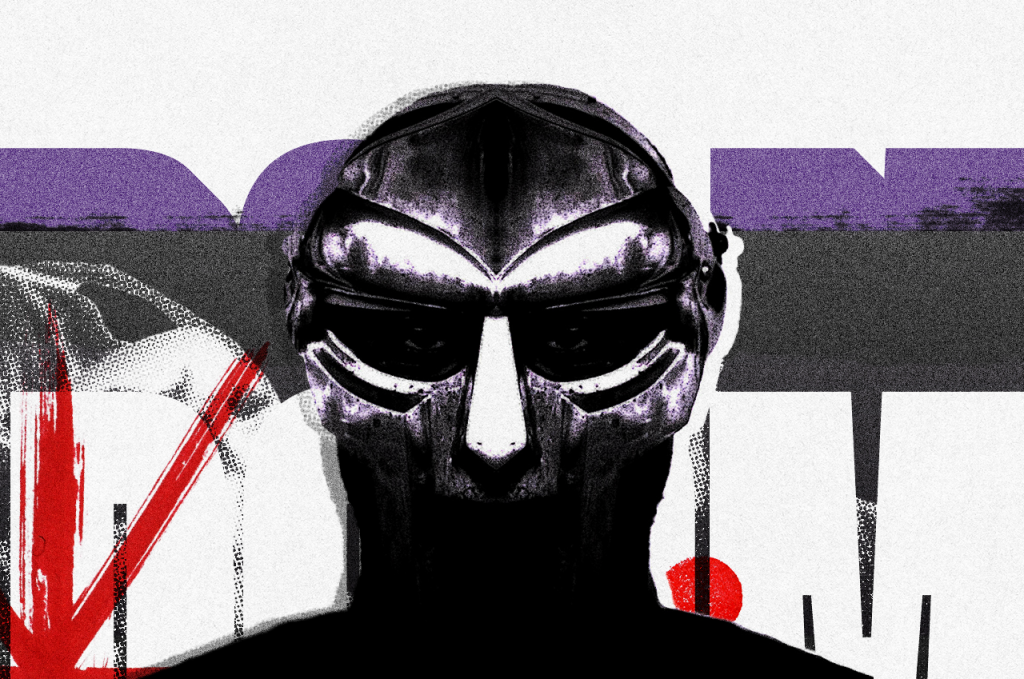
“I felt like I needed to communicate, let’s say I wasn’t happy with who I was where I was from I was an only child and I found myself kind of lonely sometimes. I basically looked to graffiti as something I wanted to become a part of, the energy was good. I could create a new identity portraying myself as that person. I came up with the name Futura 2000 loosely inspired by 2001 a Space Odyssey which came out in 1968, I was 13. Futura the typeface, the car, the blender, the vacuum cleaner… Futura 2000 just seemed the right thing for me to be. I began tagging that up I did create an identity around future 2000. No one necessarily knew me as Lenny, no one cared to know me as Lenny, I wasn’t very important as Lenny. But I somehow gained more importance not even prestige, but just personal respect as this pseudonym, anonymous, uh alter ego that’s what I mean alter ego”
‘For all my third cultures kids
Let me break it down for all those who don’t know what it is
It ain’t the culture of the country on your passport
Or parental heritage you didn’t ask for
It’s the culture you adopt while you’re growing up
You phoned home, now the UFO is showing up’
‘I’m saying when I pull my weight dreams start to come true
If you’re wack it’s on you don’t blame the world for your failure
It’s all down to you whats gonna make ya or break ya
It’s on you bredren how longs it gonna take ya‘
Mix of Cultures-Space for all influences
The art of sampling to make Hip Hop beats is an audio collage. The general framework is that using chops of other people’s music called samples you make a repeated loop that sits underneath someone rapping, or exists as a new song in its own right. To do this you first need to find some music that resonates with you, then rework it into something more personal. In early Hip Hop this was mainly funk and soul music, but as time went on and more people picked up the genre and the range of influences spread wildly. One of my favourite early examples is Afrika Bambaataa and Soulsonic Force Planet Rock famous sample of Kraftwerk’s Trans-europe express. The way that some guys making experimental electronic music in 1970s Germany resonated with someone from the projects in The Bronx to make a hit song is amazing, and really cuts through to how universal creative influence can be.
Another really cool example is the producer David Axelrods Song of Innocence, an experimental album interpreting Songs of Innocence, a 1789 illustrated collection of poems by William Blake and one of the most sampled albums ever. The creative references connecting from William Blake, to 1960s California, on to be re-interpreted and have modern poetry recorded over the top a couple of decades later is another great example of exchanges of ideas that transcend cultures.
Camaraderie and identity
The crew is another integral part of Hip Hop culture. Break dance crews battling against each other, graffiti crews out to dominate the cityscape as a joint force, producers and rappers working together to make songs. This creates a social structure where each person can feel peer pressure to maintain their place in the group through perfecting the craft and working together towards a mutual goal. Graffiti writers hiding from the police together, or risking lives to paint high risk locations end up with lasting bonds difficult to achieve with peers in day-to-day friendships, therefore creating deeper connections and trust. Bouncing lyrics off each other on stage or at a mates house, jamming for hours in synchronicity is another way that relationships build beyond that of day to day interactions.
As people working in a creative industry, we know the benefit of trusting our partners in the creative process and the confidence produced with a solid team, nothing happens in a vacuum. This community exchange of styles and ideas is paramount to raising the bar of your chosen craft, as an independent agent with your own invented style and identity, with the support of likeminded people.
‘But the flip side to that is of course that we are all using the same tools
And then it’s inevitable
That we will end up looking identical
Like fish in a school
But my school is that of the original hip hop Philosophy
Which taught to me
Always being an individual and never copy
Which kinda means embracing your supposed blemishes
Cause they distinguish you from all of the other fishes’
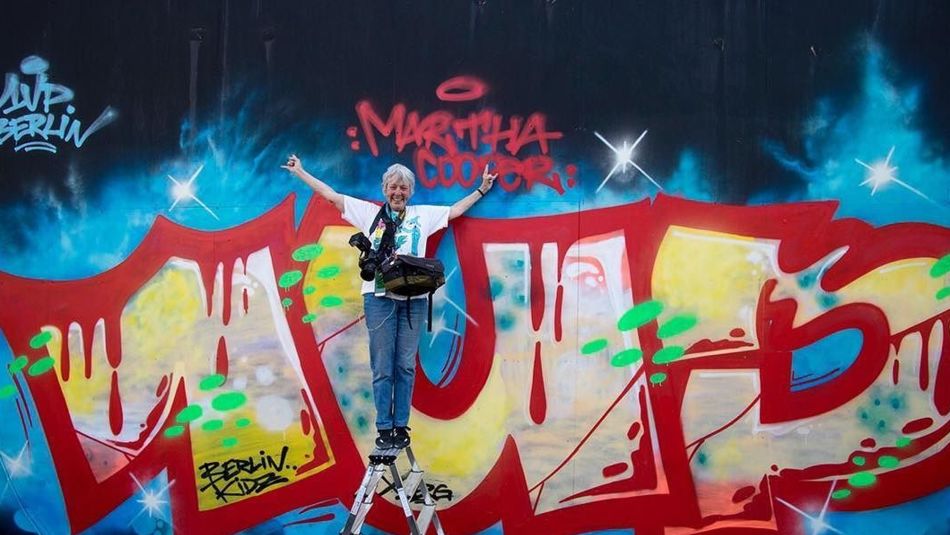
The framework of Hip Hop as a movement opened the doors to millions of people to be empowered to express individuality. This organically grown cultural framework spread globally, wider than any subculture before or since in my opinion, because it reaches so many human touch points and prioritises creativity in a social structure. The DIY approach opens up the culture to anyone who puts in the work and gives people power to be part of their cityscape, regardless of permission, education or social background. Most people grow out of the culture, but that springboard of creative engagement in those developmental years has incredible value.
At its worst, Hip Hop is an egotistical, misogynistic and shallow musical equivalent to a c list crime film. At its best, Hip Hop is a subculture that celebrates creative work and genuine expression, it gives a simple and powerful framework to get started. Want to be a lyricist? Fill these 16 bars with anything you want to say. Make massive paintings without a studio? Get out and paint. Compose a track? Find the material out there to use, start making, and just keep doing it.
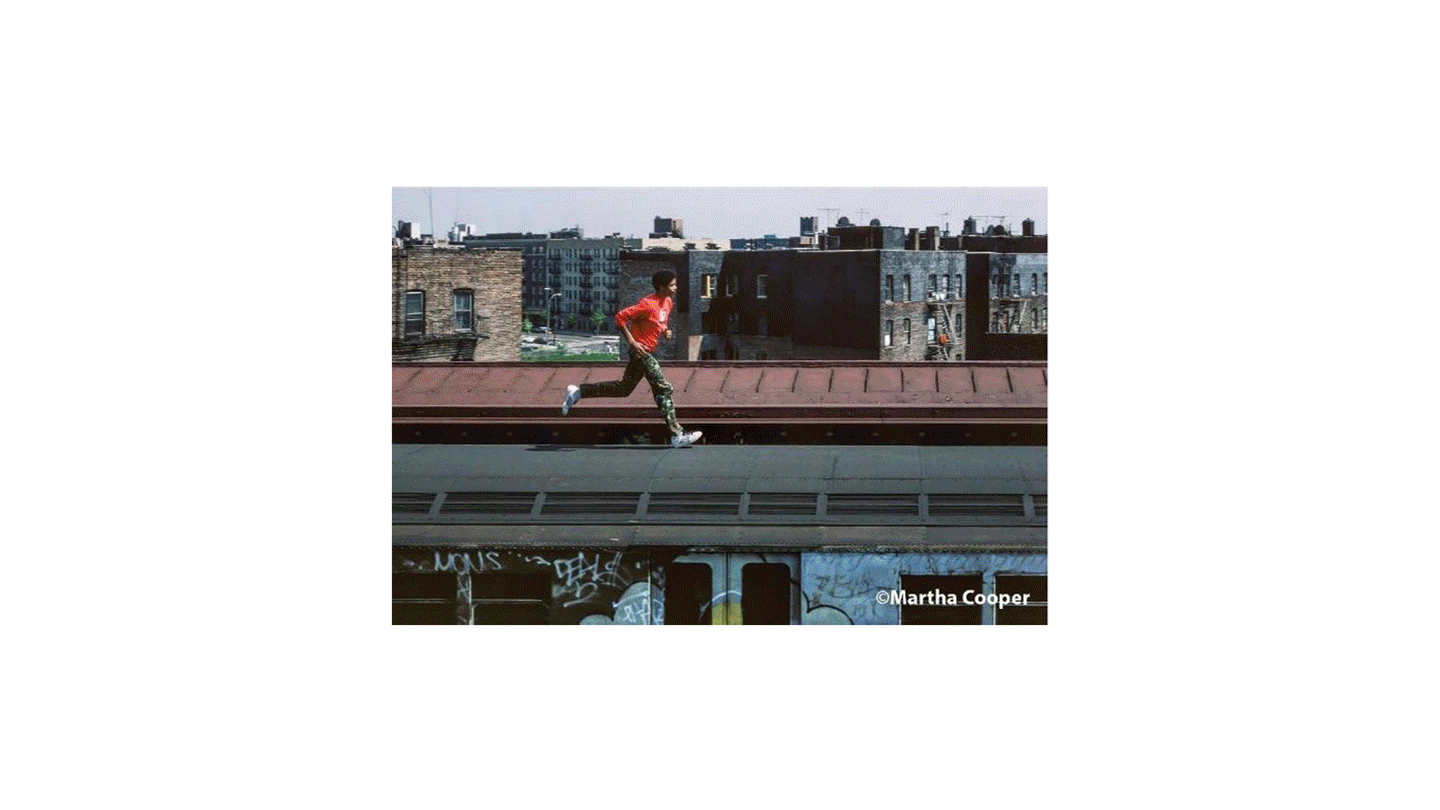
Far too fly to stay stationary
Basically I keep it constructive, like masonry
Blatantly disruptive, in this disgracefully corrupted
System plagued with injustice
But this is purity, you can’t touch this
It’s much more to me, than just thug-ish
By Will Whittington
References
musicradar.com/news/the-history-of-breaks
https://www.youtube.com/watch?v=NDWgtB_MD24
https://www.instagram.com/p/CenOe3NoZJT/
https://www.youtube.com/watch?t=34&v=vGVKi1neTeM&feature=youtu.be
https://www.youtube.com/watch?v=prmQgSpV3fA
https://www.youtube.com/watch?v=qqUwNkr-B3k&t=841s
https://www.youtube.com/watch?v=X42bzYhqZOg
https://www.youtube.com/watch?v=i9F58d6zbZ8
https://www.youtube.com/watch?v=Qu7wuz97S2Q
https://en.wikipedia.org/wiki/Song_of_Innocence#References
https://en.wikipedia.org/wiki/Songs_of_Innocence_and_of_Experience
https://en.wikipedia.org/wiki/William_Blake

